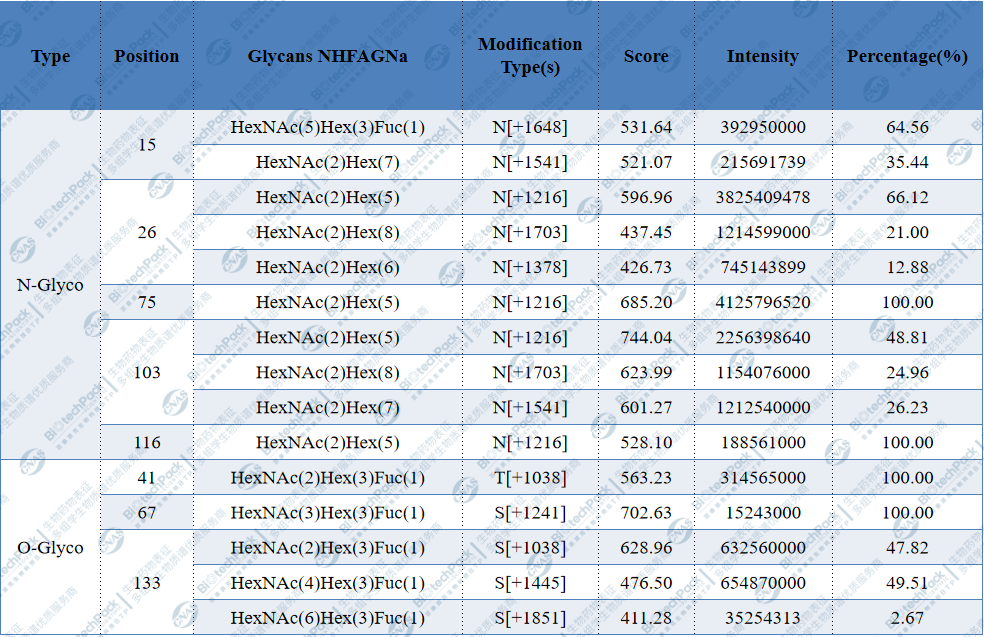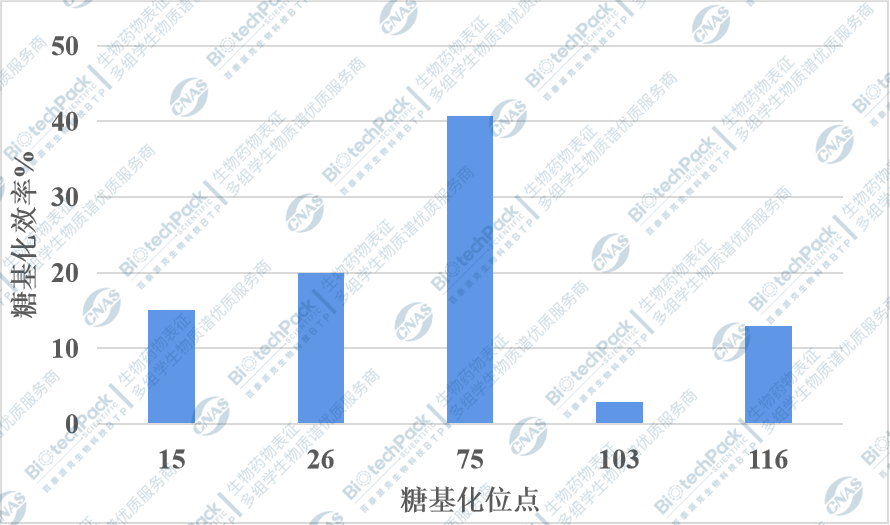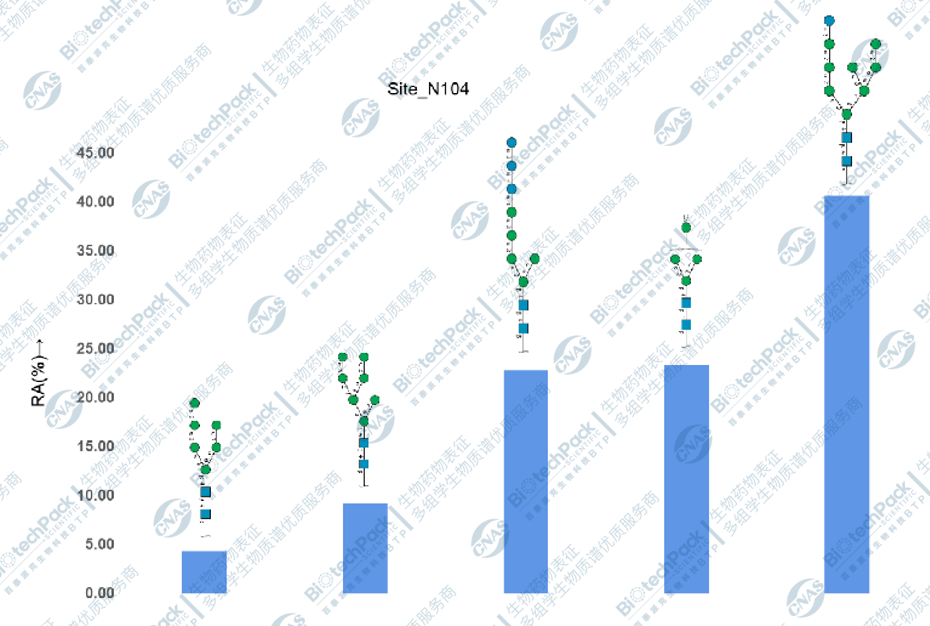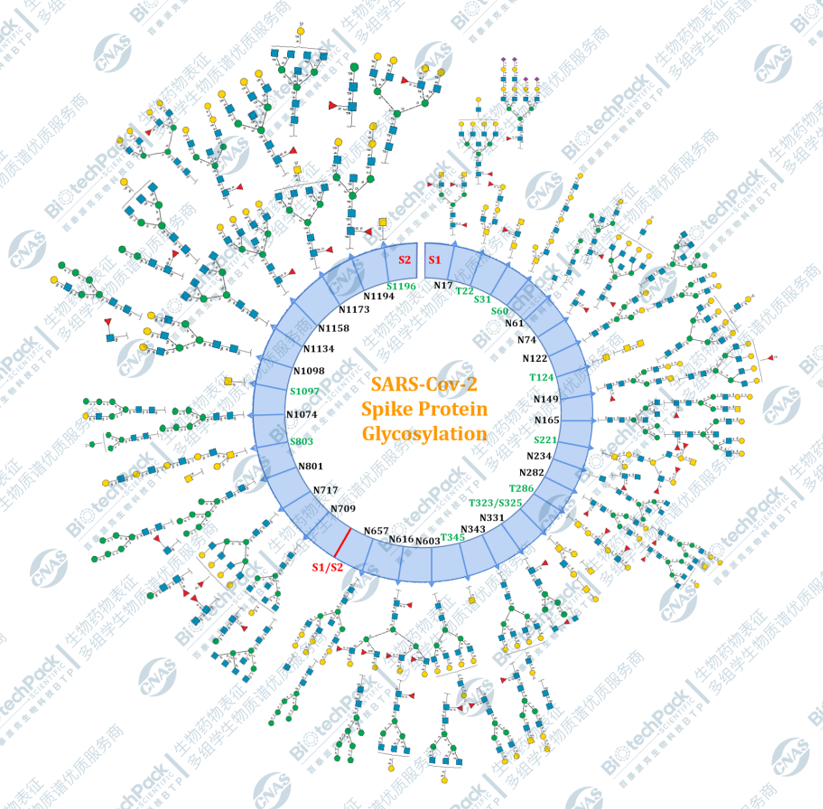Glycosylated Peptide Analysis
Glycosylation is a common post-translational modification (PTM) of proteins, which has a significant impact on the function and stability of proteins.Glycopeptides refer to the form where sugar chains are attached to peptide segments, containing information about the amino acids in the peptide segment, the complete sugar chain, and the binding sites between the sugar chain and the peptide.Glycopeptide Analysisisprotein function regulation, drug development, bioengineering, and biopharmaceuticalsresearcha widely applied technique in various fields,analysisGlycopeptides can provide detailed information about the mass, charge state, binding position, and sugar chain structure of glycopeptides,which is of great importance for a deeper understanding of the mechanisms regulating glycosylationalsohas significant implications.

Figure 1 Glycosylation Analysis Flowchart
Biotech Company BTPis certified by CNAS/ISO9001 dual quality systems. The companyhas developed a comprehensive glycosylation analysis method for specific glycoproteins based on a high-resolution mass spectrometry platform using LC-MS/MS,providing you with high-quality one-stop glycopeptide analysis services, accurately interpreting glycosylation modification types, modification efficiency at glycosylation sites, and the proportion of various glycoforms at glycosylation sites.Feel free to contact us for a free consultation to learn more details!
Experimental Instruments
- NanoLC: Vanquish NEO
- MS: Orbitrap Fusion Lumos With ETD
Technical Applications
Analysis of glycopeptides can achieve comprehensive glycosylation analysis of specific glycoproteins, providing information including:
1. Localization of glycosylation sites, identifying which sites in the protein are glycosylated;
2. Differentiation of N-glycosylation sites and O-glycosylation sites to determine the type of sugar chain modification;
3. Obtaining the composition, structure, and relative abundance information of sugar chains corresponding to each N-glycosylation site;
4. Obtaining the composition and relative abundance information of sugar chains corresponding to each O-glycosylation site;
Statistics and summary of the above information can further analyze and interpret the glycosylation characteristics of glycoproteins.
Case Demonstration
1.Glycosylation Modification Types

Table 1 Glycosylation Modification Type Statistics
Note: Type: Type of glycosylation modification; Position: Position of glycosylation site in the protein; Glycans NHFAGNa: Type of glycosylation modification; Modification Type(s): Molecular weight of the glycoform; Score: Protein score value; Intensity: Relative abundance of the protein; Percentage %: Proportion of the glycoform at each site in their total glycoform.
2.Glycosylation Site Modification Efficiency

Figure 2 Glycosylation Efficiency Statistics Chart
Note: Glycosylation efficiency (%) = (Sum of relative abundance of glycopeptides at the same site / Sum of relative abundance of non-glycosylated peptides) * 100
3.Proportion of Various Glycoforms at Each Glycosylation Site

Figure 3 Glycoform Proportion
Note: The figure shows the N-glycoform and its proportion at a given site, with the horizontal axis representing the glycoform and the vertical axis representing the proportion of the glycoform.
4.Summary of Protein Glycosylation Modification Information

Figure 4 Glycosylation Information Summary
Note: The figure shows the top three abundant sugars at each site.
Bilingual Project Report
In the technical report, BTP will provide you with a detailed bilingual (Chinese and English) technical report, including:
1. Experimental Procedures (Chinese and English)
2. Relevant Mass Spectrometry Parameters (Chinese and English)
3. Glycopeptide AnalysisDetailed Information
4. Mass Spectrometry Images
5. Raw Data
Glycopeptide AnalysisOne-stop Service
You only need to place an order and send samples
BTP's one-stop service completes: Sample Processing - Instrument Analysis - Data Analysis - Project Report
Related Services
Comprehensive Glycosylation Analysis
How to order?





